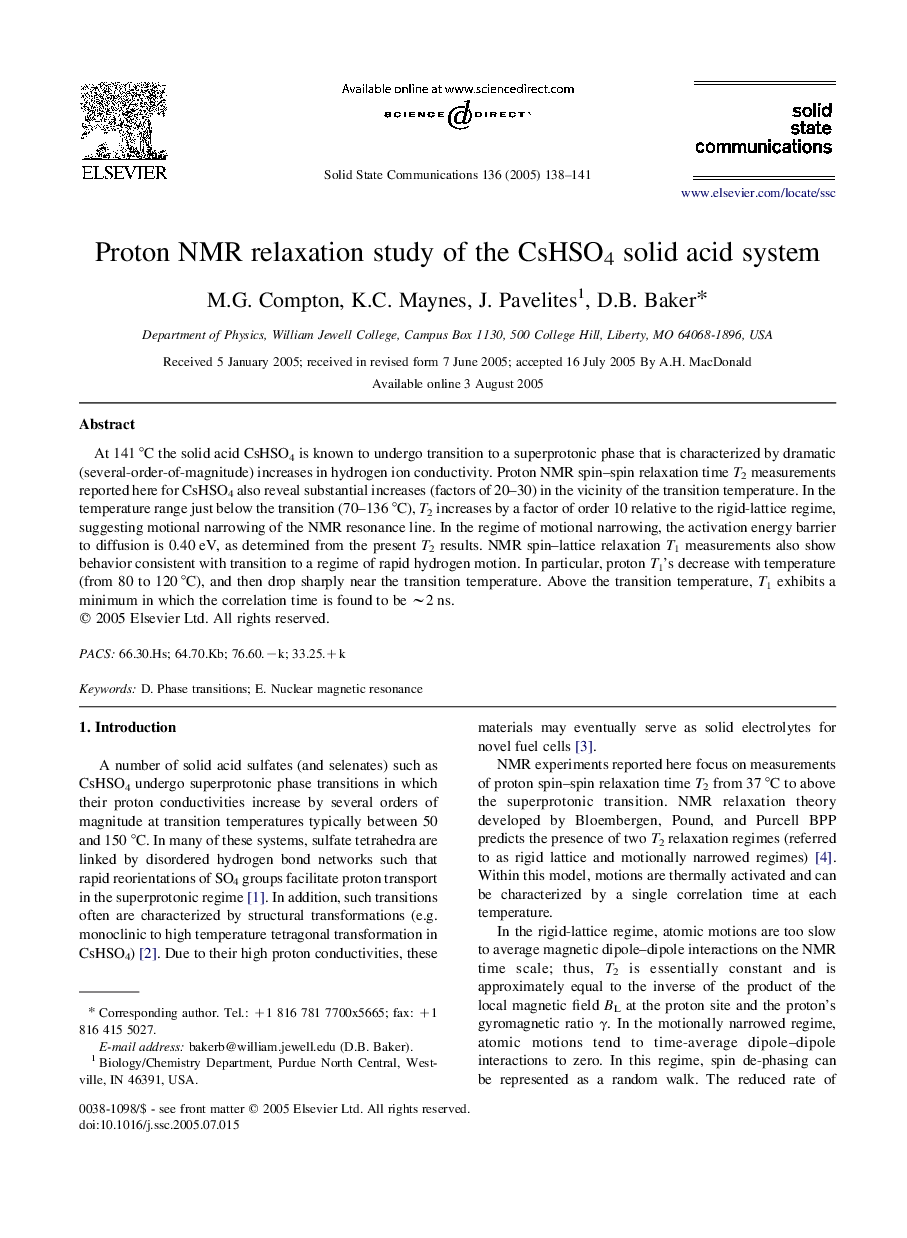| Article ID | Journal | Published Year | Pages | File Type |
|---|---|---|---|---|
| 10653382 | Solid State Communications | 2005 | 4 Pages |
Abstract
At 141 °C the solid acid CsHSO4 is known to undergo transition to a superprotonic phase that is characterized by dramatic (several-order-of-magnitude) increases in hydrogen ion conductivity. Proton NMR spin-spin relaxation time T2 measurements reported here for CsHSO4 also reveal substantial increases (factors of 20-30) in the vicinity of the transition temperature. In the temperature range just below the transition (70-136 °C), T2 increases by a factor of order 10 relative to the rigid-lattice regime, suggesting motional narrowing of the NMR resonance line. In the regime of motional narrowing, the activation energy barrier to diffusion is 0.40 eV, as determined from the present T2 results. NMR spin-lattice relaxation T1 measurements also show behavior consistent with transition to a regime of rapid hydrogen motion. In particular, proton T1's decrease with temperature (from 80 to 120 °C), and then drop sharply near the transition temperature. Above the transition temperature, T1 exhibits a minimum in which the correlation time is found to be â¼2 ns.
Related Topics
Physical Sciences and Engineering
Materials Science
Materials Science (General)
Authors
M.G. Compton, K.C. Maynes, J. Pavelites, D.B. Baker,
